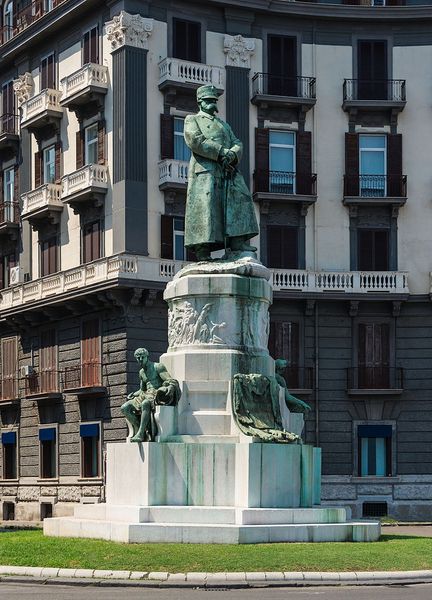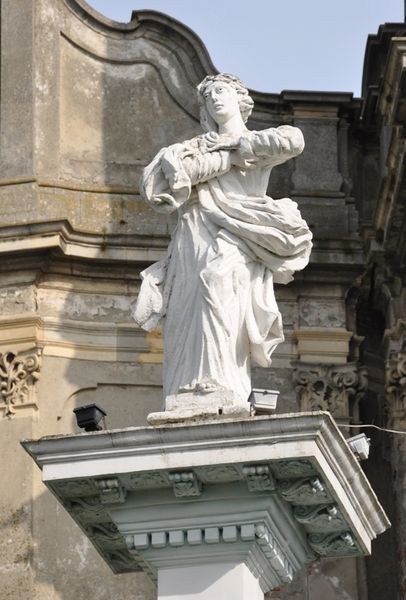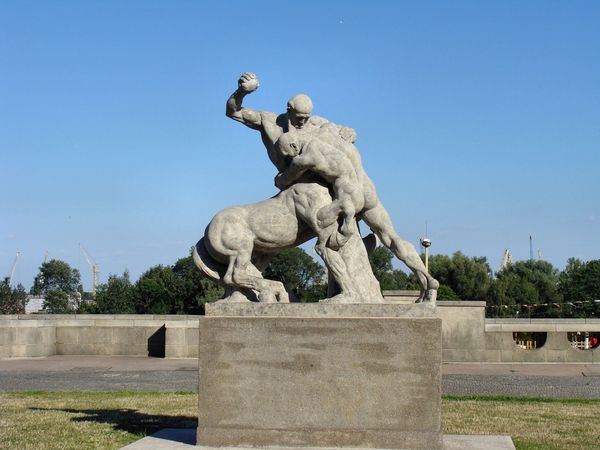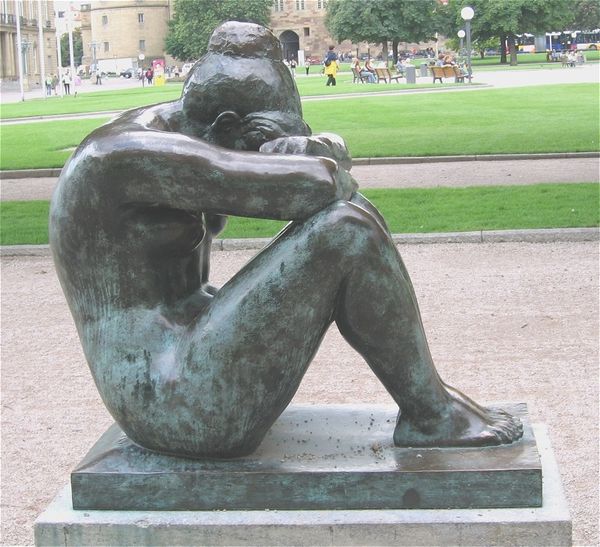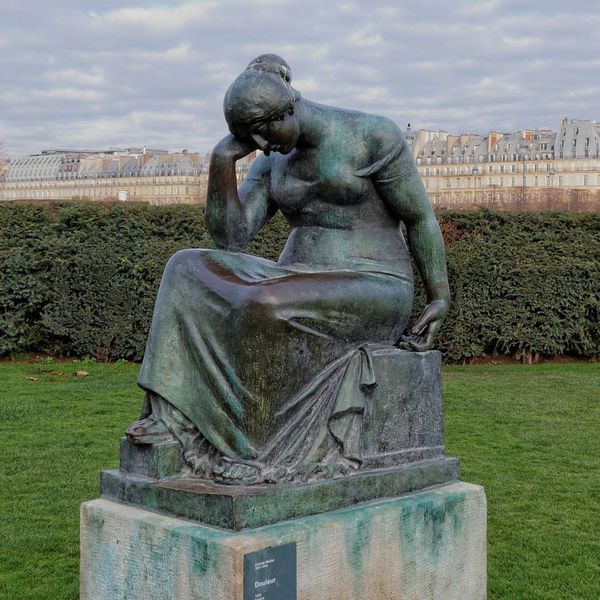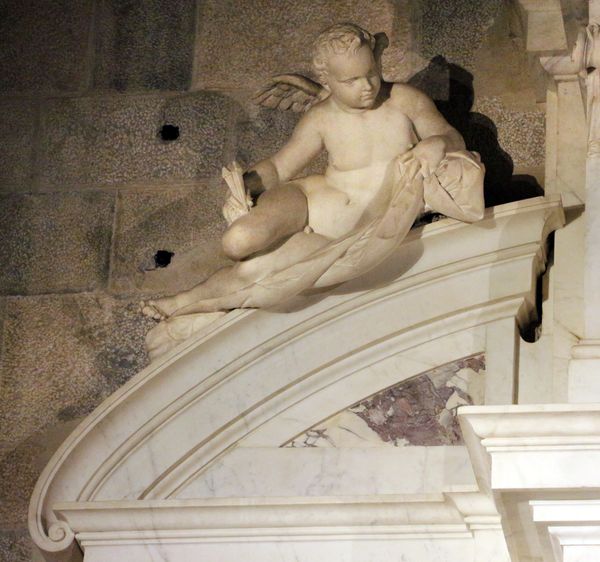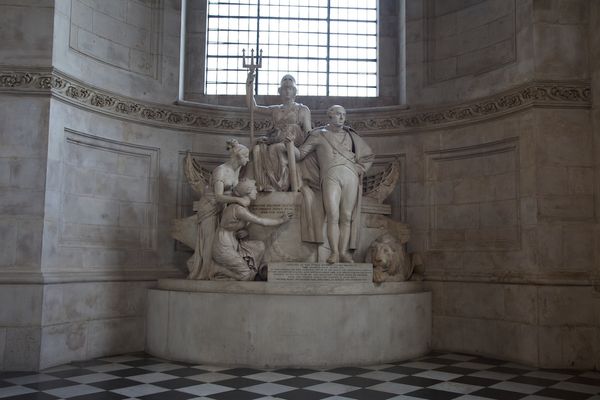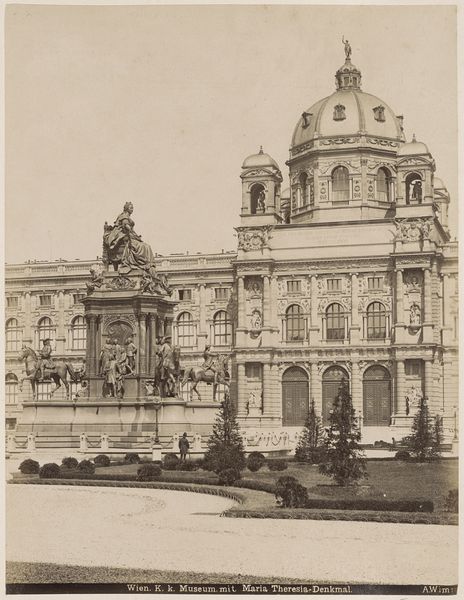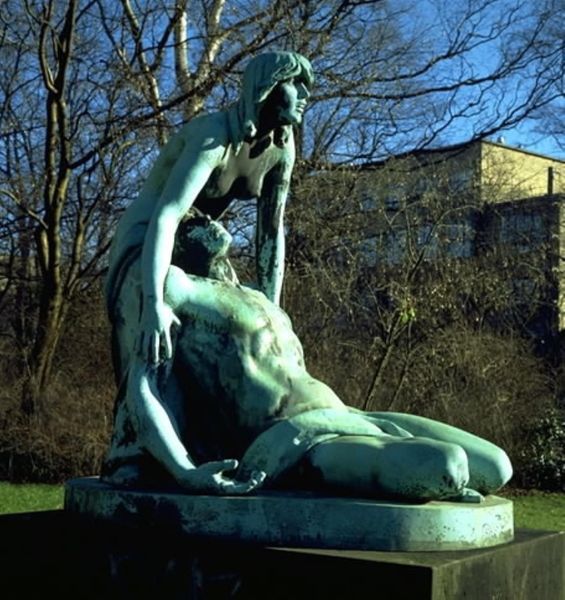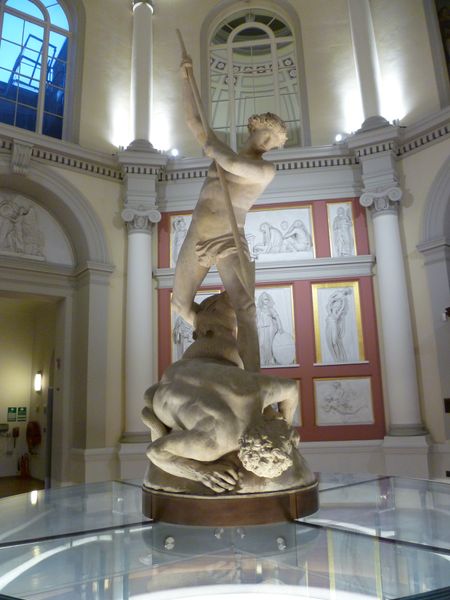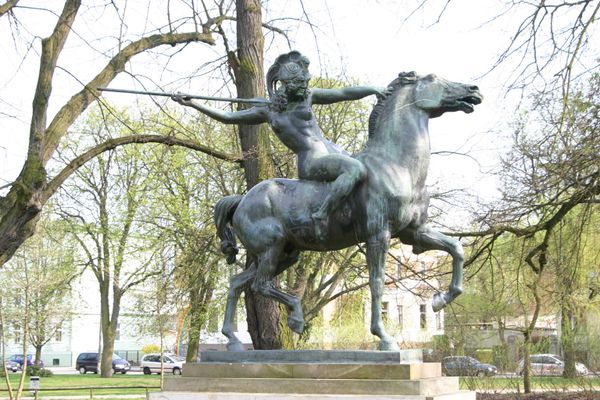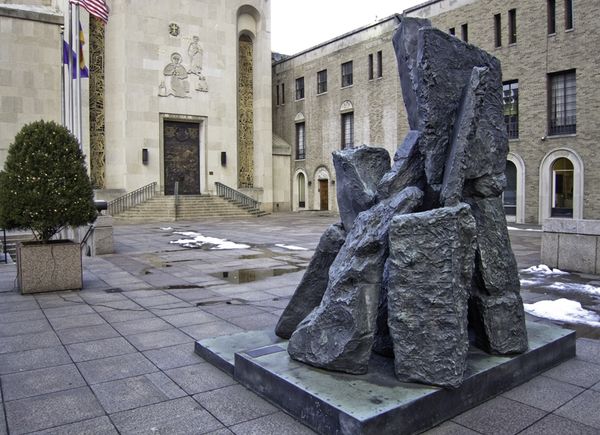
public-art, sculpture
#
public art
#
allegories
#
statue
#
public-art
#
figuration
#
sculpture
#
modernism
Copyright: Public domain
Editor: This is Auguste Rodin's "The Thinker," created in 1882. Seeing it here, outside, it seems more vulnerable than I imagined. What do you see in this piece, removed from the white walls of a gallery? Curator: "The Thinker" embodies a complex nexus of socio-political and philosophical ideals. Initially conceived as part of "The Gates of Hell," itself inspired by Dante's *Inferno*, it was meant to represent Dante, the poet observing the suffering. But beyond a literal depiction, think about its implications during the late 19th century—a period grappling with rapid industrialization and the rise of the working class. How might Rodin be critiquing or even sympathizing with the individual in contemplation, removed from action, within this context? Editor: So you're saying it's not just about thinking, but about the position of thought, and perhaps *who* is doing the thinking? Curator: Exactly. Rodin elevates a figure, but also poses questions about inaction, contemplation versus production. It encourages us to ponder the societal expectations placed upon individuals, especially in a world increasingly defined by labor and output. Consider also, the historical context: Whose philosophies were valued? Who had the luxury to "think" and how does class structure contribute? Editor: It’s a very different way of looking at this famous statue. I never considered its position as an implied critique of class and labor. Curator: It is not necessarily *just* that but taking an activist perspective reminds us that art and life are mutually inclusive of broader questions about power, gender, race, and identity. It enriches the art's cultural significance for a modern audience. What will you take away from this experience? Editor: Now, I’m eager to research how early critics received this work in relation to its historical context. Thanks.
Comments
No comments
Be the first to comment and join the conversation on the ultimate creative platform.
